In the same way as your team can be fantastic brand advocates, they can also be a liability when it comes to social media. We’ve seen a number of organisations in the UK unwittingly caught up in scandal recently, as a result of something one of their employees posted to social media. A racist Tweet posted to the account of a Savill’s employee (the employee denies he posted it) resulted in him being suspended from the company pending an investigation, and in the wake of people threatening to pull their business from the company. A man who shared a video of himself harassing England’s Chief Medical Officer, Chris Whitty, for a selfie, lost his job at an estate agency.
If an employee posts to social media, even if it’s off the clock and to their personal accounts, your brand could be associated with their views, and your reputation suffers as a result.
In an ideal world, of course, you wouldn’t employ someone who is likely to post racist, homophobic or abusive comments to social media. Abusive behaviour rarely springs from nowhere, so spotting the early signs with recruitment processes that include values-based interviews can help.
Sometimes, though, a brand will find itself in a position where an employee has expressed an opinion completely against company values and ethics, and it has to act, and defend its reputation.
The first thing to do, of course, is to take legal advice on what you can and can’t do under local laws, and within the terms of your employee contracts. Once you’ve taken the appropriate advice and acted accordingly, what can you do to protect your reputation and distance yourself from the employee’s views?
- Distance your brand from your employee’s views. Be clear this behaviour does not align with your values, and state this publicly.
- Investigate. Get to the facts of what happened. If, as in the case of Savill’s, the employee denies posting the message (for example by saying their account was hacked, or their identity stolen), then of course they should have the opportunity to defend themselves. But be prepared for a backlash of public opinion. An independent investigation could help ascertain whether the post was in keeping with the employee’s other content and views, or totally out of character (which could indicate a hack).
- There is a difference between free speech and abusive speech. Some expressions of views are protected under law, others are abusive or illegal. This is a matter for your legal and HR team, and will depend on local laws, your employee contracts and your social media policies.
- Act, and be seen to act. Whatever action you take, communicate it publicly. Ultimately, you will be judged on the action you take.
- Review how this happened in the first place. Was this a one off, or are abusive comments or offensive views prevalent in your company culture? Ask other employees how they feel about it, and if there is anything in the culture that is failing to tackle discrimination or abuse. Ask employees about their experiences, perhaps via an independent review.
- Reinforce your values. This can be done with company-wide workshops, and by creating values that can be lived and breathed by your team. A company with inclusive values is less likely to attract an employee who disagrees with them. Ensure your company behaviour aligns with those values.
- Change what you need to. If you find problems in your company’s culture, do something to change it. For example, when customers of Starbucks experienced racism in one of its stores, the brand shut down all US branches for a day of racial-bias education. Let people know that you’re doing this. It sends a strong message not just to customers, but to your internal teams, of what you consider unacceptable.
In an ideal world, of course, you wouldn’t have anyone on your team who is a bully, or racist, or abusive. Prevention is always better than cure so here are three simple steps all brands can take to prevent this situation:
- Consider reviewing a potential employee’s public social media posts to check for any potentially abusive views or content ahead of making a job offer. This isn’t foolproof, but it’s a start. You can also make your values and expectations clear from the outset – are they clear on your website and your social media posts? If you decide to take this step, exercise caution and remember this will only show one side of the candidate’s life and shouldn’t be relied on too heavily as an assessment of their suitability for a job. This whitepaper from Robert Walters gives practical advice on how to approach this.
- Have clear social media policies and guidelines, and train your teams regularly on them. Asking employees to add ‘views are my own, not those of my employer’ doesn’t really do anything to distance their views from yours – if your employee is identifiable as working for you, you will be associated with their views whether or not you want to be. Your guidelines should set out the type of posts you see as unacceptable, and what the consequences of posting such content would be. For example, it’s a good idea to state that your anti-bullying and harassment policy extends to social media as well – stating that any behaviour that tarnishes the company or other employees will have a consequence.
- Train your teams on social media. There is no excuse for racism or hate speech of any kind. Some people, though, might post other types of content they later regret, particularly if they posted in anger, or under the influence of alcohol, or when feeling extreme emotions. Train your team on the impact of posting to social media, and remind them that anything they post could be there forever. Social media posts will last far longer than the mood they were in when they hit send. Remind them, too, that whatever they post will reflect on the company they work for.
And finally, reinforce your values and culture regularly, both internally and externally. Ultimately, if your company behaviour is clearly and overtly not aligned with that of a rogue member of your team, you are far more likely to survive the backlash from the actions of a single employee.






Leave a Reply